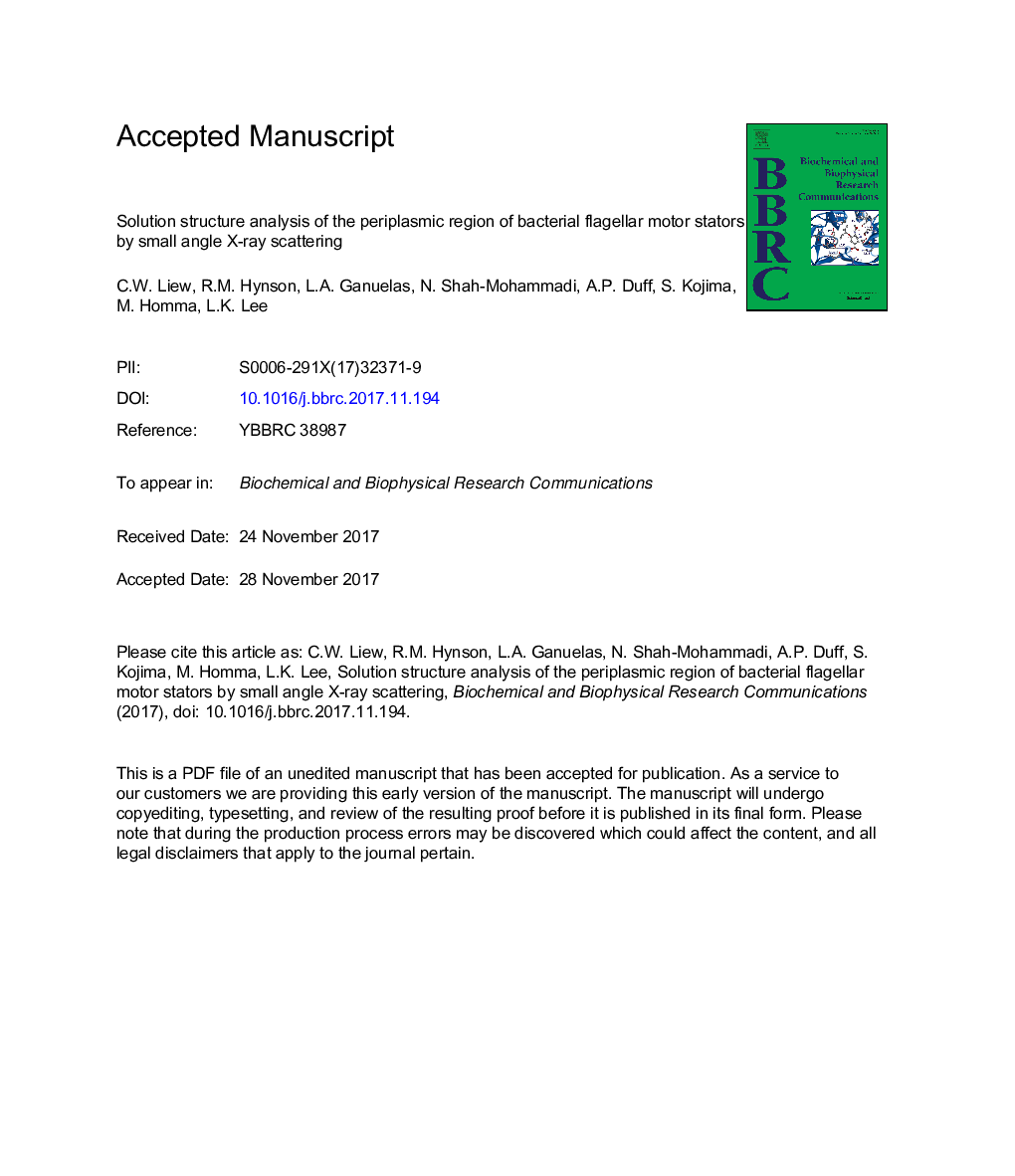| Article ID | Journal | Published Year | Pages | File Type |
|---|---|---|---|---|
| 8295240 | Biochemical and Biophysical Research Communications | 2018 | 25 Pages |
Abstract
The bacterial flagellar motor drives the rotation of helical flagellar filaments to propel bacteria through viscous media. It consists of a dynamic population of mechanosensitive stators that are embedded in the inner membrane and activate in response to external load. This entails assembly around the rotor, anchoring to the peptidoglycan layer to counteract torque from the rotor and opening of a cation channel to facilitate an influx of cations, which is converted into mechanical rotation. Stator complexes are comprised of four copies of an integral membrane A subunit and two copies of a B subunit. Each B subunit includes a C-terminal OmpA-like peptidoglycan-binding (PGB) domain. This is thought to be linked to a single N-terminal transmembrane helix by a long unstructured peptide, which allows the PGB domain to bind to the peptidoglycan layer during stator anchoring. The high-resolution crystal structures of flagellar motor PGB domains from Salmonella enterica (MotBC2) and Vibrio alginolyticus (PomBC5) have previously been elucidated. Here, we use small-angle X-ray scattering (SAXS). We show that unlike MotBC2, the dimeric conformation of the PomBC5 in solution differs to its crystal structure, and explore the functional relevance by characterising gain-of-function mutants as well as wild-type constructs of various lengths. These provide new insight into the conformational diversity of flagellar motor PGB domains and experimental verification of their overall topology.
Keywords
Related Topics
Life Sciences
Biochemistry, Genetics and Molecular Biology
Biochemistry
Authors
C.W. Liew, R.M. Hynson, L.A. Ganuelas, N. Shah-Mohammadi, A.P. Duff, S. Kojima, M. Homma, L.K. Lee,
